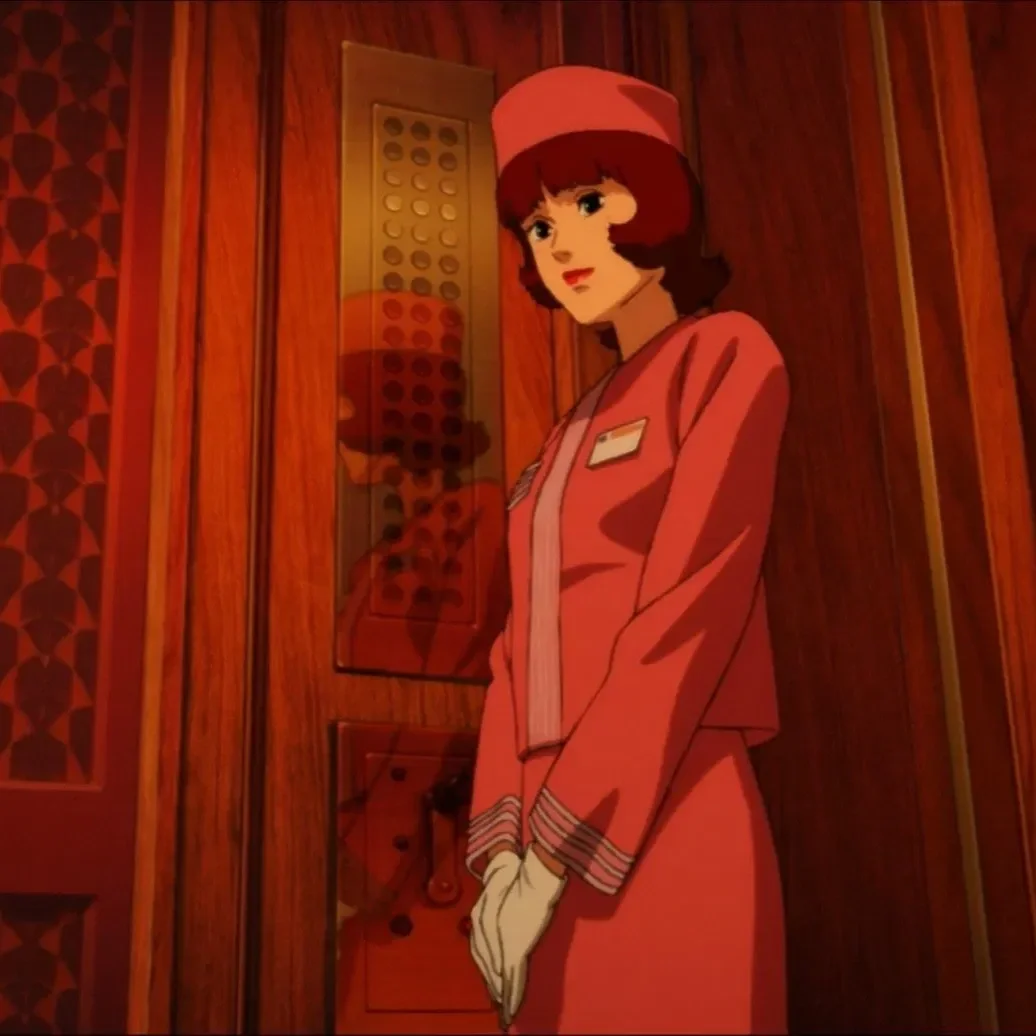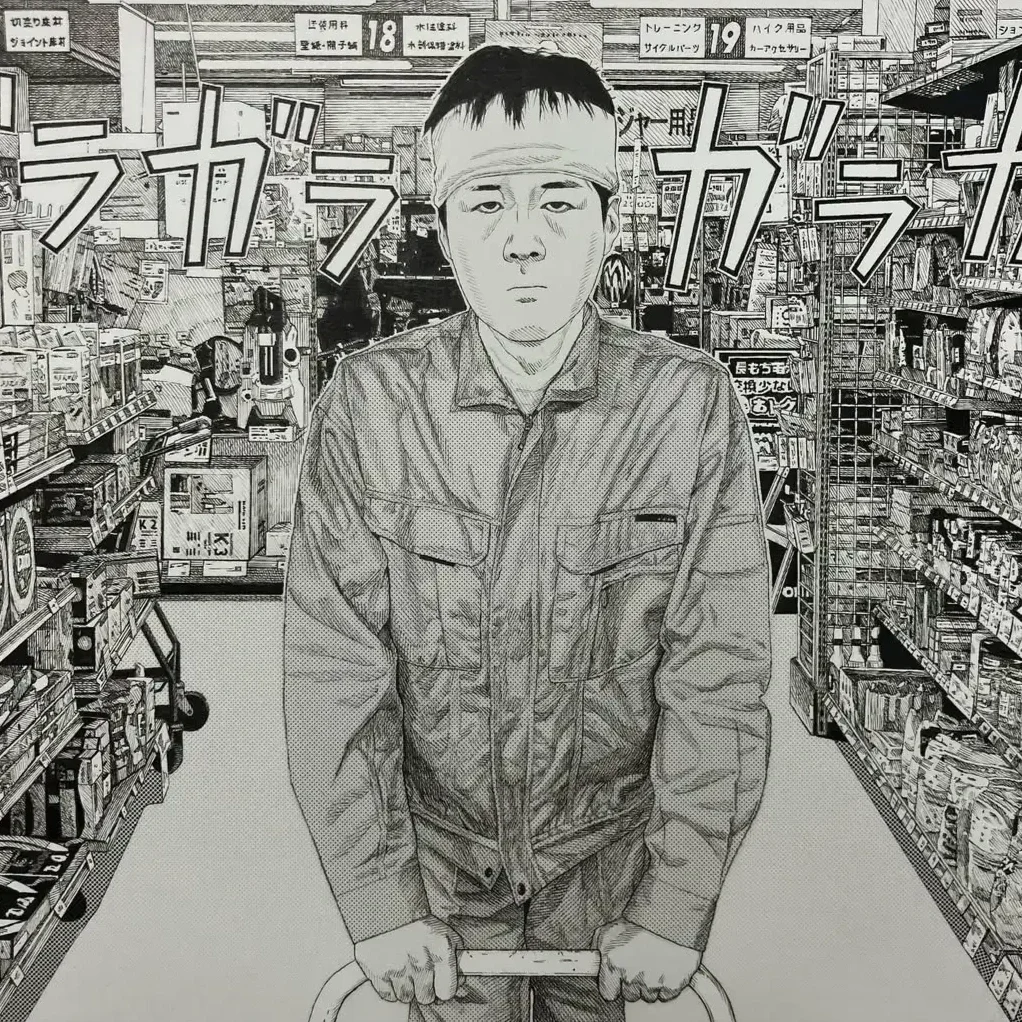In the Mist of Twin Peaks Mania in Japan
The June 1992 cover of Japanese Premiere magazine
While Japanese television was still dominated by romantic dramas, family comedies, and grand historical sagas, an American series of a new genre made a discreet but decisive entrance onto Japanese screens: Twin Peaks, created by David Lynch and Mark Frost. Broadcasted in April 1991, it quickly generated unexpected enthusiasm, capturing the attention of a Japanese audience seemingly removed from the context and American psyche the series explores.
In a small fictional town in Washington State, a murder upsets the balance of a community already fractured by secrets, dreams, and supernatural apparitions. But beyond its detective story, Twin Peaks offers a sensory immersion into a profoundly unique universe, at once dreamlike, disturbing, and disconcerting.
What could have been a mere object of cultural curiosity becomes a true phenomenon in Japan. Filmmakers, animators, artists, and musicians recognize it as a radical work, whose strange atmospheres, haunting silences, and layered aesthetics resonate particularly with their own visual and symbolic cultures. It's not so much the story that seduces, but the aura, the diffuse feeling of familiar strangeness, the suspended slowness of an altered reality.
Why did Twin Peaks fascinate Japan so much in the 1990s, and why does it continue to do so? And how did a series so rooted in American culture find such a strong echo in the Japanese imagination?
The Aesthetic and Narrative Shock
When Twin Peaks arrived on Japanese screens, it delivered a veritable electric shock to the local audiovisual landscape. Nothing in Japanese television at the time resembled this series, where soap opera coexists with esotericism, where the detective investigation slides into pure fantasy, and where the bizarre is never explained, simply assumed. This shock stems primarily from the aesthetic rupture embodied by Twin Peaks, a work in which narrative norms are transgressed with rare audacity, even in the experimental context of Japanese television, which is nevertheless fond of codified universes, well-calibrated formats, and resolving narratives.
Georgia Coffee ad featuring Dale Cooper
At first, the audience is disoriented. The slow, hypnotic pace contrasts with that of domestic series, which are more didactic or emotional. The sparingly delivered dialogue, the heavy silences, the enveloping soundtrack composed by Angelo Badalamenti, and the atypical framing create a sense of familiar strangeness. It is precisely this fluidity between the familiar and the unfamiliar, what the Japanese might refer to as iwakan (“feeling of unease” or “dissonance”), that appeals to many viewers and creators.
Narratively, Twin Peaks rejects the logical order of procedural series. The main plot, following the mysterious death of Laura Palmer, seems to dissolve into a tangle of subplots, cryptic dreams, double identities, and opaque symbols. Far from being off-putting, this narrative fragmentation fascinates Japanese fans of labyrinthine tales. The investigation thus becomes a pretext for delving into a troubled collective psyche, a mental theater where surreal figures mingle with the most mundane everyday life.
Visually, Twin Peaks is part of an aesthetic tradition that, in many ways, finds echoes in Japanese auteur cinema, particularly that of Seijun Suzuki and Nobuhiko Obayashi. The use of saturated colors, the pictorial composition of shots, the introduction of supernatural elements without rational justification, and the desire to create atmospheres rather than explanations remind Japanese viewers of codes that may be familiar to them but which are transplanted into an improbable and hazy American setting. It is this unexpected intersection between a fantasized America and aesthetic tropes that gives the series its magnetic character.
Finally, the impact of Dale Cooper, an enigmatic and charming protagonist, perceived in Japan as an iconoclastic hero, should not be underestimated. His calm demeanor, his sensitivity to the invisible world, his love of “damn good coffee”, and his shamanic reveries make him a unique figure, far removed from classic Western detectives. He embodies a form of floating spirituality and attention to detail that resonates with certain traits of contemporary Japanese culture, marked by a growing interest in mysticism, psychology, and the supernatural.
Twin Peaks and Japanese Visual Culture
The reception of Twin Peaks in Japan quickly transformed into a visual dialogue, fueled by subtle echoes and unexpected aesthetic resonances. David Lynch and Mark Frost's series not only intrigued viewers with its narrative and enigmatic atmosphere, it also found fertile ground in the Japanese visual imagination, influencing artists, creators, and filmmakers, while engaging with sensibilities deeply rooted in Japanese visual culture.
Upon the series’ broadcast, the most prominent stylistic elements of Twin Peaks immediately aroused interest among Japanese visual artists, who recognized in it an aesthetic close to visual gesaku, a tradition of ornamental abundance and extreme stylization inherited from both kabuki and the graphic arts of the Edo period. Furthermore, Lynch's taste for fetishized everyday objects (Margaret Lanterman’s log, better known as the Log Lady, the cherry pie, the tape recorders) resonates with the Japanese attention to trivial detail, elevated to the rank of narrative or poetic element.
The imagery of Twin Peaks also lends itself to a form of reading imbued with visual syncretism. One can highlight the similarities between the forest spirits evoked in the series and figures from Japanese folklore, such as yokai, kodama, or mountain kami. The fluidity between life and death, the visible and the invisible, thus evokes a Japanese perception of the animist world, in which places, objects, and even memories, carry a presence. This porosity of aesthetics has opened up a new creative space, visible in the fields of photography, fashion, and graphic design in Japan. Many magazine covers of the time, advertising campaigns, and Japanese music videos borrowed from the world of Twin Peaks its sepia tones, spectral figures, and waking-dream atmosphere, sometimes evoking a similar tension between eroticism, dread, and melancholy.
In short, Twin Peaks became, in Japan, a distorting and revealing mirror, through which creators were able to question their own aesthetic codes, play with quotation marks, and explore other configurations of the imagination. This phenomenon of visual translation reveals a common ground: a shared taste for mystery, symbolic detail, and the sensory power of the image.
A Cult Phenomenon
Unlike other American hits like Dallas or Dynasty, which never really took off in Japan, Twin Peaks has become a true social phenomenon, a transmedia cult object that has captured hearts, imaginations, and commercial storefronts. This phenomenon has fueled as much rarity as fascination, and has given rise to a community of passionate fans, abundant marketing, and a series of echoes in Japanese popular culture.
Japanese fans didn’t just watch the series, they actively participated in its mythology. Mock funerals for Laura Palmer were held in Tokyo, Osaka, and Nagoya, bringing together several thousand people. Organized tours brought more than 300 Japanese people to Snoqualmie, Washington, the filming location for the series. There, they were able to eat a slice of cherry pie at the “Double R Diner”, stay at Cooper's lodge, and for some, reenact the iconic scene of Laura Palmer wrapped in plastic, lying on the beach (a gesture that strangely resonates with a Japanese sensitivity to the representation of the suffering body, particularly the female body).
A memorial service for Laura Palmer in Japan - February 1992
Far from simple fetishism, these practices are a form of cathartic, almost ritualistic identification, where fiction and reality intertwine. The character of Laura Palmer, a seemingly perfect but internally fractured young woman, has become a tragic icon with whom many Japanese female viewers have said they resonate.
The success of Twin Peaks was accompanied by a proliferation of merchandise. Caps, t-shirts, magazines, and translated books, including The Secret Diary of Laura Palmer, which sold over 250,000 copies, were ubiquitous in bookstores and cinemas. Practical guides like How to Be a Peaker delighted a fandom eager to decode Lynch’s universe. Video stores were also in high demand, with a 14-cassette VHS box set selling over 30,000 copies, despite a prohibitive price of around $440.
The marketing didn't stop there. The Georgia Company, a popular canned coffee brand in Japan, hired David Lynch for a series of television commercials featuring Kyle MacLachlan reprising his role as Dale Cooper. These mini-episodes, a kind of condensed version of Twin Peaks with an advertising twist, formed a fascinating bridge between narrative fiction and commercial strategy, further proof of Japan's extraordinary cultural permeability to Lynchian strangeness.
Twin Peaks’ impact on Japanese creators has also been profound. Hideo Kojima, creator of Metal Gear Solid, has often cited David Lynch as a major influence, and his games share with Twin Peaks a taste for moral ambiguity, fractured realities, and enigmatic dialogue. Legendary Nintendo director Takashi Tezuka (Super Mario World, The Legend of Zelda: A Link to the Past) was greatly inspired by the atmosphere of Twin Peaks when he was working on the Game Boy installment of the Zelda saga. Here is what he said in an interview: "I wanted to give Link's Awakening a Twin Peaks feel. At the time, the show was quite popular.
The series focused on a small number of characters in a small town. So I wanted to create something that, while concise enough to be easily understood, would have deep and distinctive characteristics. I suggested making all the characters suspect, like in the then-popular Twin Peaks”. Even more surprisingly, Pokémon creator Satoshi Tajiri was also influenced by the atmosphere of the series, and more generally by Lynch's universe, as evidenced by a vinyl of the Eraserhead soundtrack proudly placed on his desk while he was working on the first games in his flagship franchise.
Satoshi Tajiri’s desk with the Eraserhead vinyl in the background
This influence is also felt in Japanese animation and cinema. Satoshi Kon (Perfect Blue, Millennium Actress) was inspired by the tonal shifts, the shifts between reality and hallucination, and the labyrinthine construction of Lynch's universe. Nobuhiko Obayashi, director of House (1977), has been compared to Lynch for his ability to blend the absurd, the grotesque, and the poetic.
Even today, themed cafes like Café:Monochrome in Shibuya pay homage to the world of Twin Peaks, and the series retains a special place in the cultural memory of an entire generation. This fascination endures because it touches on something essential in the Japanese media landscape of the 1990s, a desire for escape from the norm, for mystery in the ordinary, and for poetry in deviance.
What Twin Peaks Reveals About Contemporary Japan
What does this fervent support for a deliberately disconcerting American series reveal? Several avenues of interpretation emerge. First, the world of Twin Peaks offers an escape from Japanese social rigidity. In a society where human relationships are highly codified, absurdity and chaos become forms of liberation. As one fan put it, “we are tired of the usual dramas with predictable human relationships”. The series' intentional opacity, its refusal of rational explanations, and its element of unspoken content constitute a breath of fresh air in a culture of implicit explanation and emotional control.
Second, the attraction to the supernatural, so prevalent among Japanese youth in the 1990s, reinforces the attraction to a world where spirits wander, dreams take over, and logic gives way to intuition. Japanese fans are thus perhaps better prepared to accept mystery as an end in itself.
Finally, Twin Peaks embodies a fantastical, rural, foggy, and disturbing America, quite different from Hollywood clichés. It offers the Japanese a poetic and disturbing reinterpretation of the American dream, where the polished surface of small towns conceals unspeakable darkness. This perception, tinged with critical exoticism, reflects a form of widespread anxiety about globalization and cultural homogenization.
More than thirty years after its first broadcast, Twin Peaks: The Return (2017) rekindled the interest of longtime Japanese fans while attracting a new generation of viewers fascinated by its radical aesthetic and narrative shifts. The satellite channel WOWOW, which had already contributed to the series’ initial popularity in the 1990s, played a key role by broadcasting this third season accompanied by a special message recorded by David Lynch for Japanese audiences. Critical reception was generally enthusiastic, praising the formal audacity of this sequel, conceived as a total work of art, far more experimental than nostalgic.
In Japan, The Return reinforced the series’ mystical aura, perceived not as a simple revival, but as a narrative and sensory culmination of a worldview that remains as singular as ever. This reception confirms that Twin Peaks remains a fertile source of inspiration in Japan, a dreamlike territory to be explored again, in the infinity of its troubled reflections.










An emotional blueprint evolved into wearable architecture.